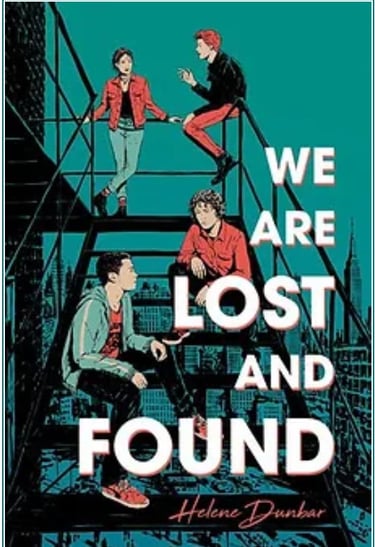You Can't Write That!
S.C. Farrow
5/12/20215 min read


Some of you already know that my novel This is Not a Lie is about a character who is gay and who also happens to be a drug addict. Some of you will also know that the story is deeply personal to me and was inspired by real people and events.
However, when I began work on this novel, I knew, as a straight, cisgender woman, I was facing two big concerns: 1) I was writing about a character from a minority community and 2) straight people wouldn’t read a book about a gay character.
CONCERN #2
I’m going to start with concern #2. I know this is odd, but stick with me… I’m going to admit, straight up, that I was nervous about writing This is Not a Lie. I was nervous because I was a straight woman writing about a gay man. I was doubly nervous because that gay man was also a drug addict.
I can’t deny that I also wondered if straight people would ever read it, and that if, when they realised it was about a gay character, they would then dismiss it in favour of something else. That concern led me to a more general question—do straight people read gay books at all?
Unfortunately, men currently represent only about twenty percent of fiction readers. It seems their preference is for non-fiction, or that they simply don’t read at all. However, it turns out that a lot of straight women read gay fiction, especially M/M romance, which is written by heterosexual women for heterosexual women.
Why do women love these stories? Gay romance writer Heidi Cullinan said, “One of the reasons why more women are ravenous for these books is that they want to read something about gay men that doesn’t involve them suffering from HIV/AIDS, committing suicide, or getting bullied.”
Moving on to Concern #1...
CONCERN #1
In the course of researching information for a totally unrelated topic, I came across an i-D article (i-D is a digital magazine produced in the UK) that asks if it really matters who writes queer stories. The article is specifically about YA fiction; however, it addresses some interesting concerns about the phenomena of straight people writing gay fiction. The article’s author points out that while it’s wonderful to see an increase in character diversity in YA novels, it’s a fact that these novels are almost exclusively written by straight women.
In May 2018, the up-coming publication of Helene Dunbar’s novel (now published) about a gay teen growing up during the AIDS crisis caused a huge controversy on Twitter with some users sharing impassioned views about “female authors profiting from the ‘trend’ of gay boy books, while actual gay men writing YA are seemingly shuffled to the sidelines.”
In 2015, long before the Twitter storm around Dunbar’s book, a campaign called “Own Voices” began, encouraging the publication of diverse characters written by authors from their own diverse group. YA author Adam Sass argues that “if you’re not a part of an “Own Voices” community, you really need to be asking yourself: Can you write about this? Absolutely. But should you?”
It’s a great point. And it’s a topic that is always hotly debated in the classes that I teach. My book is based on the idea that society has determined that same sex love and relationships are forbidden. However, it’s not just a gay story. It’s a story about people. It could be set in any time or any place. In fact, one astute reviewer of my book said:
Joel’s tragedy is universal. It could be two women or lovers coming from different ethnic, religious, or economic backgrounds, and it can still bear the yoke of forbidden love. S.C. Farrow does not have to give you a magnified view of gayness to grasp the message.
The concept of forbidden relationships is nothing new. Shakespeare did it back in 1591 (or thereabouts) when he wrote Romeo and Juliet. Now, I’m not arrogant enough to liken myself to the Bard; but we do have something in common. Romeo and Juliet was inspired by the story of real lovers who lived in Verona, Italy in 1303. Likewise, my characters were inspired by real people, two men whom I knew and loved with passion and compassion.
However, this conversation raises the all-important question: have I appropriated their stories for the purpose of exploitation? I’d be a fool to deny that’s exactly what I’ve done. But I feel I have also appropriated their stories for the purpose of advocation. What happened to the two men who were the inspiration for this story was horrific, and my point in writing This is Not a Lie is to add my voice to the chorus of those who are outraged over the unjust laws and decisions that society has made about and for these men.
But this story was not only inspired by those two men. It was also inspired by my own experiences. It is also my story. In that respect, my narrative is a complex three-way of sex, drugs, and rock ‘n’ roll.
BACK TO CONCERN #2
In the i-D article YA author Lev Rosen says that, “When a straight person is telling a gay story, they’re almost always telling that for a straight audience through the ‘straight gaze.” I can’t argue with that observation. However, I have to wonder if that’s such a bad thing. If straight people are writing about gay characters, it stands to reason that a wider audience is reading about gay characters, and that homosexuality is being embraced by a percentage (even if it is a small percentage) of the mainstream reading community. With luck it will mean that people are no longer looking at gay folk as ‘something other’. However, there are gay authors who believe that women have no business writing gay male characters whatsoever, or male characters in general, because:
They’re no good at it
It’s not okay to write about gay characters if you’re heterosexual
Women are invading gay men’s literary territory
The characters in M/M romances are not representative of real gay men (because the men in hetero romance stories are!)
M/M romances (written by and for heterosexual women) are undermining opportunities for real ‘gay fiction’.
It’s natural for people in minority groups (gay, disabled, indigenous, ethnic, religious, women, etc.) to want to protect their realities from exploitation.
However, it is possible to write about something authentically and compassionately without having first-hand experience of it. Tolstoy was not a woman and did not throw himself under a train, yet he wrote Anna Karenina. Hannah Kent is not Icelandic (though she did spend a year in Iceland as an exchange student), yet she wrote the brilliant Burial Rites. And Thomas Keneally is neither German nor Jewish, yet he wrote Schindler’s Ark.
I could go on, but you get the point.
YOU CAN'T WRITE THAT!
And the point is not to say see! If others can do it, I can do it too! The point is to say that if these literary artists hadn't taken a chance on writing about characters or cultures they were not born into, the world would have been deprived not only of their brilliant stories, but the opportunity to learn and reflect on our own lives and our place amongst our fellow human beings.
I consider myself to be a postmodern humanist, if such a thing is possible. I believe that knowledge and value systems are socially conditioned and are framed as products of political, historical, and cultural discourses. However, I also believe in the potential and agency of people as individuals as well as members of society.
As an author, I am aware that words have power and when I write, I adhere to the primary rule to ‘do no harm’.
I believe that minority groups should tell their own stories. And I believe that authors from outside minority groups should be able to write about them too, as long as respect is paid, and absolutely no harm is done.
Creative writing
Ethical writing
Writing with sensitivity


© 2024. All rights reserved
In the spirit of reconciliation, we acknowledge the Traditional Custodians of Country throughout Australia and the Torres Straight Islands and their connections to land, sea, and community. We pay our respects to elders past and present and extend that respect to all First Nations and Torres Strait Islander peoples today.
ABN: 19 569 432 238





